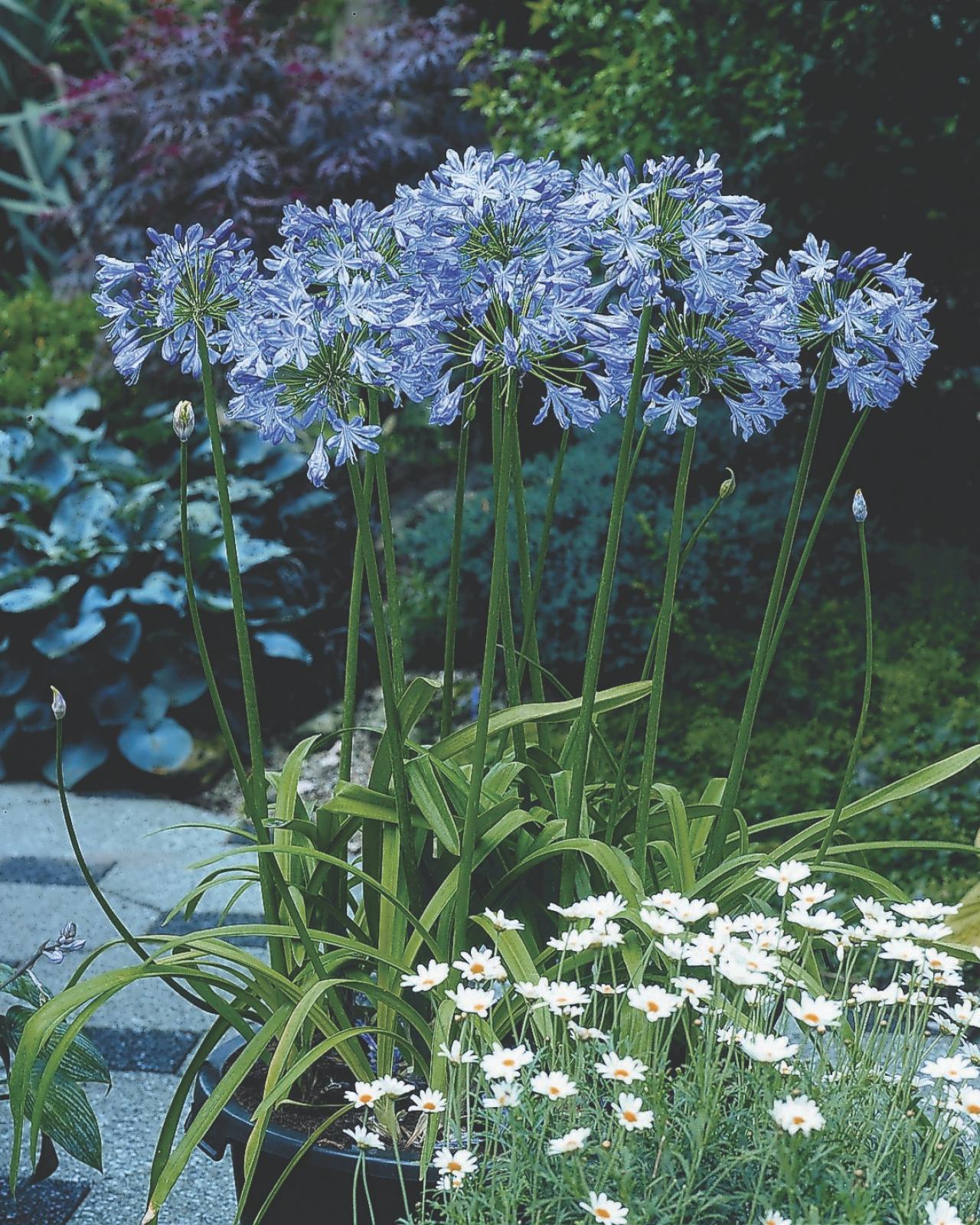Understanding the Art of Agapanthus Care: Important Actions for Healthy And Balanced Development and Dynamic Blooms
In the realm of cultivation, the growing of agapanthus stands as a fulfilling endeavor for those that seek to support these classy blooming plants. With their striking blossoms and elegant foliage, agapanthus has captured the attention of garden enthusiasts worldwide. However, attaining ideal development and lively blooms calls for a nuanced strategy that incorporates numerous vital steps. From choosing the best selection to understanding pruning methods, the journey in the direction of growing prospering agapanthus plants is diverse and holds the crucial to opening the complete capacity of these herb gems.

Selecting the Right Agapanthus Variety

When choosing the best Agapanthus variety for your yard, consider variables such as environment suitability, bloom shade, and growth habit. Additionally, take into consideration the climate in your area to make sure the Agapanthus variety you pick can grow in your specific problems. Recognizing the growth behavior of different Agapanthus ranges is crucial for correct placement within your yard.
Perfect Growing Problems
Considering the optimum environmental needs is essential for successful Agapanthus growing. Agapanthus plants are delicate to chilly temperature levels and need to be protected from frost throughout winter season months.
To make certain healthy and balanced growth and vivid blooms, plant Agapanthus bulbs at a depth of concerning 2-4 inches and space them 8-12 inches apart. Adding raw material, such as garden compost, to the soil can enhance water drainage and fertility, promoting durable origin growth. Mulching around the base of the plants aids keep wetness and suppresses weed development. Regular watering is essential, especially throughout the growing season, to maintain the dirt constantly damp yet not saturated.
Watering and Feeding Tips
Maintaining proper moisture degrees and giving vital nutrients are crucial aspects in the treatment regimen for Agapanthus plants. When it comes to watering Agapanthus, it is vital to strike an equilibrium. These plants choose constantly moist soil but are at risk to root rot if overwatered.
Feeding Agapanthus is essential for promoting healthy growth and prolific flowers. Apply a well balanced fertilizer, such as a 10-10-10 formula, in the early springtime as brand-new development arises. Repeat this application every 6-8 weeks throughout the expanding period. Avoid excessive fertilization, as it can lead to rich foliage at the expense of blossoms. Always adhere to the supplier's instructions for proper dilution and application methods. By adhering to these watering and feeding pointers, you can guarantee your Agapanthus plants grow and create vivid, long-lasting blooms.
Pruning Techniques for Agapanthus
Trimming Agapanthus plants at the proper times and with appropriate techniques is critical for preserving their health and advertising optimum growth and blooming. The suitable time to prune Agapanthus is in late winter or very early spring prior to brand-new development emerges.
For flowered stems, wait till the flowers have withered and afterwards cut them back to the base. This not only cleans up the plant's appearance however additionally motivates the development of brand-new blossom buds. Deadheading spent blossoms can also reroute the plant's energy right into producing even more blossoms instead of setting seeds. Nonetheless, if you want to collect seeds for propagation, leave some flowers to fully grown and dry on the plant.
Remember to utilize clean, sharp tools to make specific cuts and reduce the danger of presenting diseases. Agapanthus. Normal pruning will aid maintain your Agapanthus looking cool and healthy and balanced while making certain a plentiful screen of stunning blossoms
Dealing With Common Pests and Conditions
After ensuring proper pruning methods for Agapanthus, it is necessary to resolve typical insects and diseases that can affect the health and vitality of these plants. Agapanthus plants are typically durable but can still succumb to particular problems. One usual pest that affects Agapanthus is the Agapanthus gall midge. This tiny, orange fly lays its eggs in the vegetation, bring about altered development and blossom buds that fall short to websites open up. To combat this insect, prune and destroy any kind of damaged plant components and take into consideration making use of insecticidal soap.
An additional typical concern is fungal leaf area, which provides as dark lesions on the leaves. To stop fungal diseases, ensure good air look at these guys blood circulation around the plants, prevent overhanging watering, and eliminate any infected leaves promptly. Additionally, Agapanthus plants can experience origin rot if they are grown in improperly draining dirt. To avoid this, plant Agapanthus in well-draining dirt and prevent overwatering. By being attentive and taking timely action versus bugs and diseases, you can assist your Agapanthus plants prosper and create dynamic blossoms.

Verdict
Finally, understanding the art of agapanthus treatment entails picking the appropriate range, providing suitable growing problems, appropriate watering and fertilizing, ideal trimming strategies, and resolving you can try these out usual pests and conditions. By complying with these crucial actions, you can make certain healthy and balanced development and lively flowers for your agapanthus plants. Keep in mind to on a regular basis keep an eye on and keep your plants to advertise their general wellness and longevity.
To make certain healthy and balanced development and dynamic blooms, plant Agapanthus bulbs at a deepness of regarding 2-4 inches and area them 8-12 inches apart. By following these watering and feeding ideas, you can ensure your Agapanthus plants thrive and generate vivid, resilient blooms.
One usual parasite that affects Agapanthus is the Agapanthus gall midge. In addition, Agapanthus plants can endure from root rot if they are grown in poorly draining pipes dirt. By adhering to these essential actions, you can guarantee healthy and balanced development and dynamic blooms for your agapanthus plants.